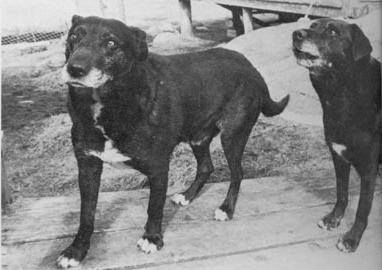Men of the 8th Battalion, East Yorkshire Regiment going up to the line near Frezenberg during the Third Battle of Ypres; ca. 1917

WAR… what is it good for? Absolutely NOTHING.
“See that little stream—we could walk to it in two minutes. It took the British a month to walk to it—a whole empire walking very slowly, dying in front and pushing forward behind. And another empire walked very slowly backward a few inches a day, leaving the dead like a million bloody rugs. No Europeans will ever do that again in this generation…This western-front business couldn’t be done again, not for a long time. The young men think they could do it but they couldn’t. They could fight the first Marne again but not this. This took religion and years of plenty and tremendous sureties and the exact relation that existed between the classes. The Russians and Italians weren’t any good on this front. You had to have a whole-souled sentimental equipment going back further than you could remember. You had to remember Christmas, and postcards of the Crown Prince and his fiancée, and little cafés in Valence and beer gardens in Unter den Linden and weddings at the mairie, and going to the Derby, and your grandfather’s whiskers…This kind of battle was invented by Lewis Carroll and Jules Verne and whoever wrote Undine, and country deacons bowling and marraines in Marseilles and girls seduced in the back lanes of Wurtemburg and Westphalia. Why, this was a love battle—there was a century of middle-class love spent here…All my beautiful lovely safe world blew itself up here with a great gust of high explosive love…”
-Dick Diver (Tender is the Night by F. Scott Fitzgerald)
From Wikipedia:
The Battle of Broodseinde was fought on 4 October 1917 near Ypres in Flanders, at the east end of the Gheluvelt plateau, by the British Second and Fifth armies and the German Fourth Army. The battle was the most successful Allied attack of the Battle of Passchendaele. Using “bite-and-hold” tactics, with objectives limited to what could be held against German counter-attacks, the British devastated the German defence, which prompted a crisis among the German commanders and caused a severe loss of morale in the German Fourth Army. Preparations were made by the Germans for local withdrawals and planning began for a greater withdrawal, which would entail the loss to the Germans of the Belgian coast, one of the strategic aims of the British offensive. After the period of unsettled but drier weather in September, heavy rain began again on 4 October and affected the remainder of the campaign, working more to the advantage of the German defenders, who were being pushed back on to far less damaged ground. The British had to move their artillery forward into the area devastated by shellfire and soaked by the return of heavy rain, restricting the routes on which guns and ammunition could be moved, which presented German artillery with easier targets. In the next British attack on 9 October after several days of rain, the German defence achieved a costly defensive success, holding the approaches to Passchendaele village, which was the most tactically vital ground.
Two ladies do high kicks while posing atop Overhanging Rock at Glacier Point in the Yosemite National Park; ca. 1900
Kitty Tatch and Katherine Hazelston, were waitresses at Yosemite National Park hotels. They loved to pose for photographers on Overhanging Rock at Glacier Point, 3000 feet above the valley. The photographers then turned the pictures into best-selling postcards autographed by Tatch. Wearing a long wide skirt she danced and did high kicks, announcing by her clothes that it was a woman doing these feats. Tatch liked to get as close to the edge as possible. (Source)
“Tired of shoveling snow?” Sergt. Robert G. Evraets uses a flame thrower to clear a path through the frozen Governors Island; ca.1947
Carl Oscar Henning Forslund. First person in Sweden who got fined for speeding on 26 may 1900
Police constable Karlsson could outrun the car. Here is a picture of the police report.







